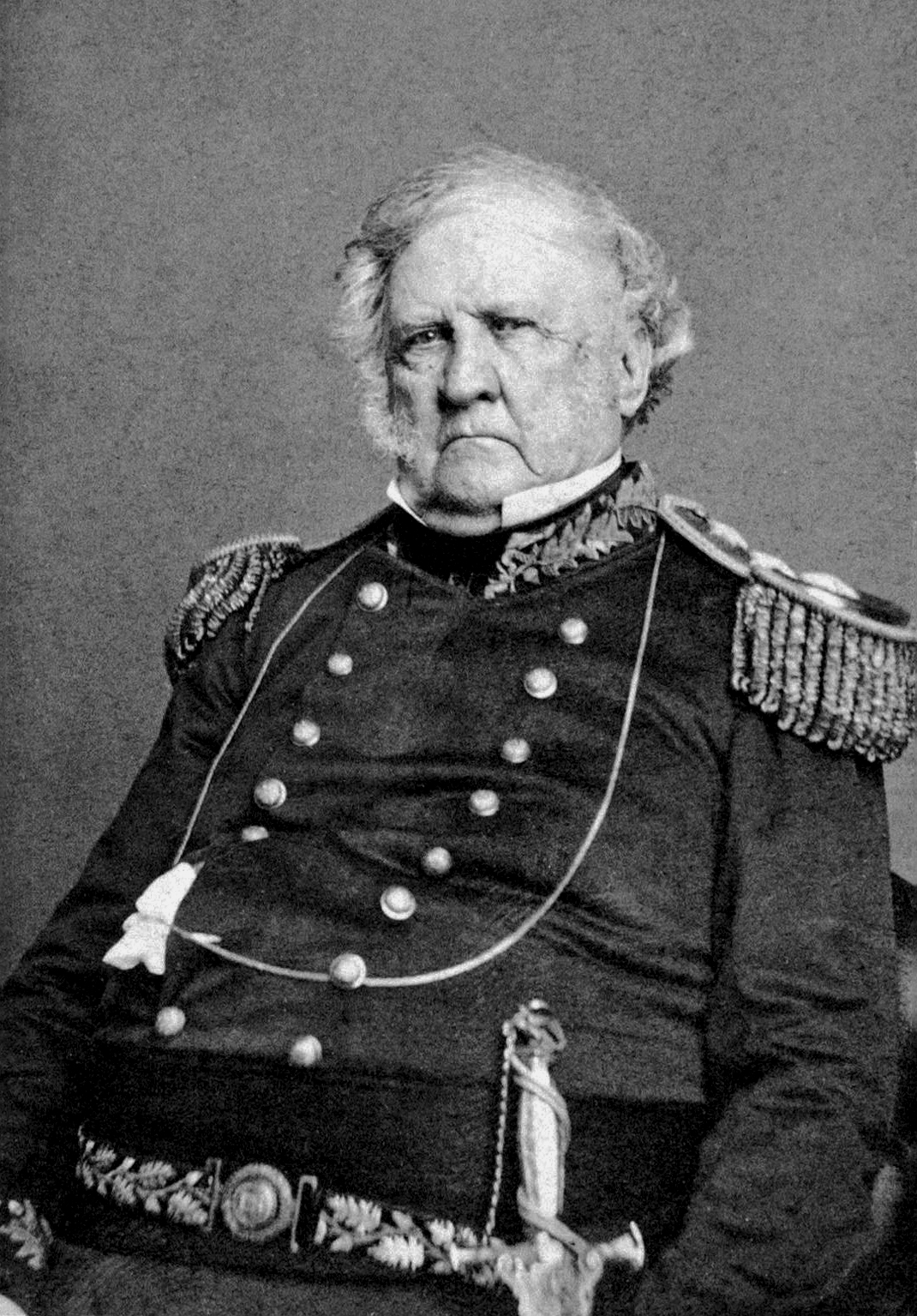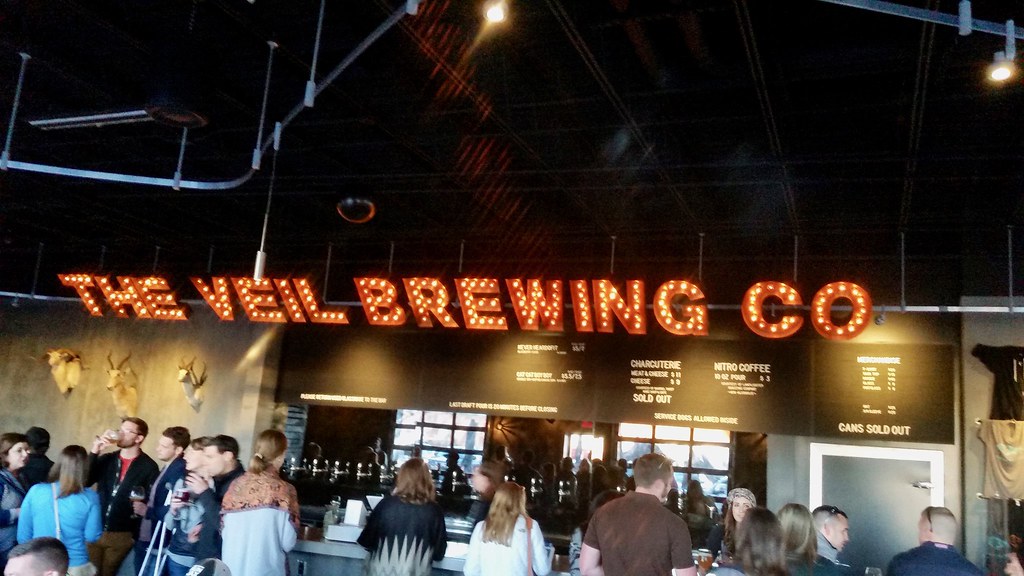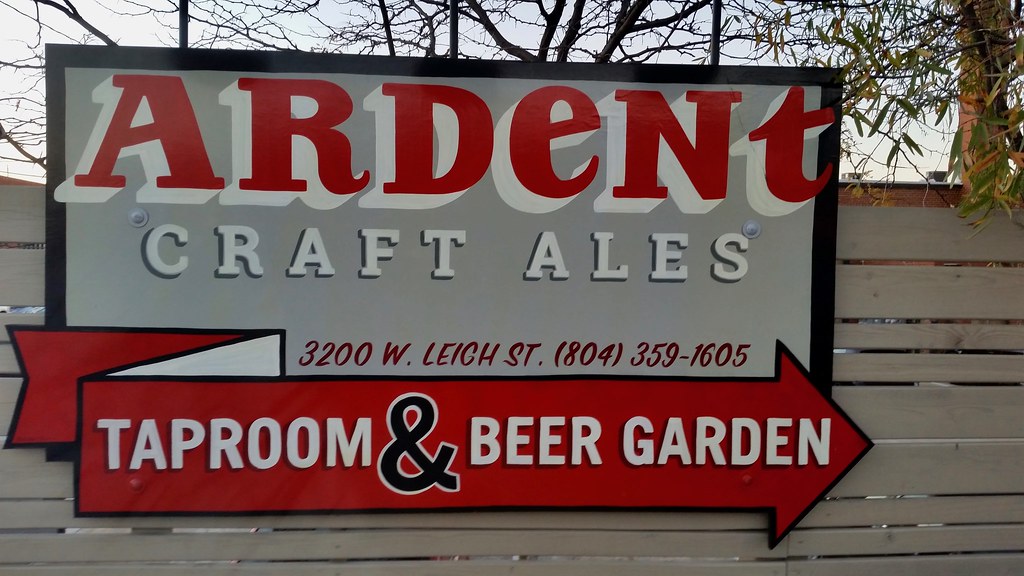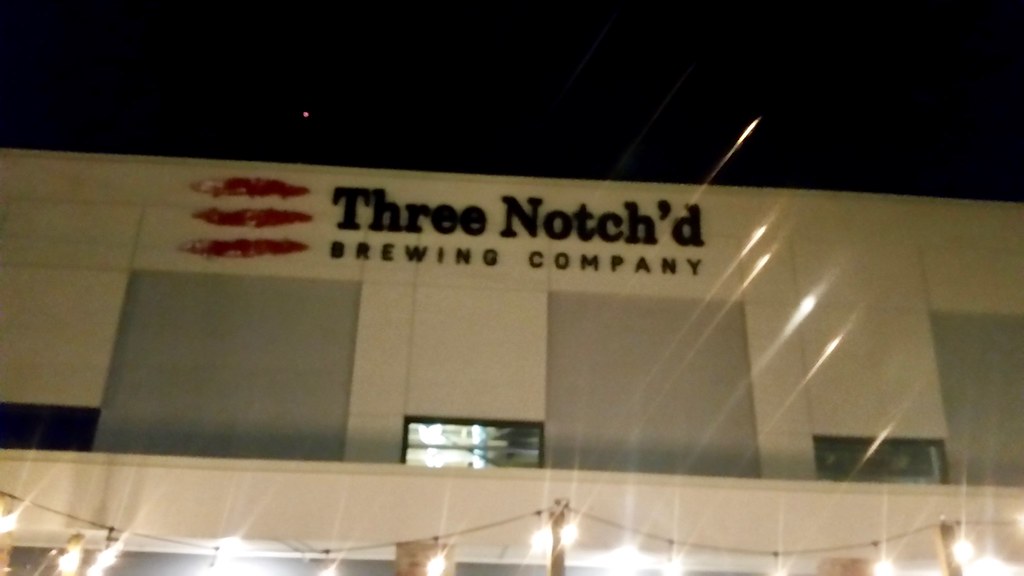I never mentioned my reason for being stuck on Interstate 95 the other day except for a brief reference to an overnight trip to Richmond, Virginia. My younger son participates on a travel soccer team and they played in a tournament over the Veterans Day weekend. We don’t get 3-day weekends anymore. They’re all consumed by tournaments. My older son has no interest in any of this whatsoever and sometimes he gets a reprieve. That explained why the two of us went county counting in West Virginia over the Columbus Day weekend. However, this time all four of us went to Richmond.
Anyway, let’s switch directions and talk about General Winfield Scott for awhile because he figured into this too.
Winfield Scott

Scott served in the United States Army longer than just about anyone else, ever. His career stretched all the way from the War of 1812 to the Civil War, some 53 years. “Old Fuss and Feathers” — as his troops called him — spent most of that time at the rank of General including two decades as Commanding General. He achieved his greatest victories in the Mexican–American War. He also took a shot at becoming President as the Whig Party candidate in 1852. Many historians considered him the greatest American military commander of his generation.
Setting all those momentous achievements aside, one tangential factor set the stage for my weekend sojourn: Winfield Scott married Maria DeHart Mayo in 1817. Her father, Colonel John Mayo, happened to be one of the wealthiest men in Virginia as well as a former mayor of Richmond. Thus, Col. Mayo provided quite a nice dowry when Maria and Winfield married, a 600-acre estate on the northwestern edge of Richmond. It remained in the family until the early 20th Century when developers purchased it and the City of Richmond annexed it. At that time it got its current name, Scott’s Addition, for the obvious reason.
Scott’s Addition Historic District
Originally envisioned as a residential area, it flourished instead as an industrial park due to its proximity to rail lines and highways. According to the Scott’s Addition Boulevard Association,
“The area remained largely undeveloped until the early 1900s, when it saw the construction of modest dwellings and businesses. A second wave of development occurred between the 1930s and 1950s with the building of large industrial plants, commercial buildings, and warehouses amongst the existing dwellings. The second phase of development largely defines the types of buildings located at present in the district.”
Business included a factory for the National Biscuit Company (Nabisco), a Coca-Cola bottling plant, and a Chevrolet parts depot and warehouse. Smaller businesses like plumbers, auto body shops, and light industrial manufacturers also found it attractive. However, the area began to atrophy towards the end of the 20th Century. Spaces were cramped. Buildings were old and fell into disrepair. Businesses began to relocate farther out from the city.
The Turnaround
A confluence of events sparked the resurgence of Scott’s Addition in recent years. First, this emptying warehouse and industrial district sat conveniently close to downtown Richmond. Second, the government provided tax incentives. Developers got tax credits for rehabilitating vintage structures in the historic district. The city also offered a tax abatement program on improvements for a period of up to 10 years.
Development began to explode by 2010 and never looked back. Hundreds of new apartments blossomed in Scott’s Addition. Businesses catering to younger clientele with abundant disposable income quickly followed. “Gentrification” might not be quite the right word because the area didn’t have much of an original residential population to push out, although it contained some of the same trappings. It went from a decaying warehouse district to Richmond’s hottest spot in about five years.
I went there for the breweries. They fell into a tight cluster, all within easy walking distance.
Breweries
A few Twelve Mile Circle readers probably already knew about my visit. They subscribed to my Twitter feed. Yes, I continue to maintain the world’s lamest Twitter account. I post links to new articles, occasional photos of geo-oddities, and lots of pictures from breweries. The beer pictures scare away the geo-geeks while the geography stuff scares away the beer crowd. I’ll gain a few new subscribers and then the total will drop again when I launch into a breweriana Twitter storm. Anyway I’m not sure where I’m going with this. I’d behave differently, I suppose, if I cared about chasing numbers.
Isley

Isley Brewing became the first brewery to open for business in Scott’s Addition. That happened in ancient times, all the way back in 2013. That amazed me. Seriously, the neighborhood changed that quickly. Now, some call it Richmond’s booziest neighborhood.
The Veil

However, the real reason I found myself in Scott’s Addition was because I wanted to visit The Veil. Its brewer spent time at two of the best breweries in the U.S., The Alchemist and Hill Farmstead. He also apprenticing at Cantillon in Belgium. I’d heard the buzz and I wanted to check it out in person.
Our Richmond friends suggested the walking tour of Scott’s Addition to experience some of the other breweries. We were already there so it made sense. I’m glad we did. The Veil had only two beers on tap during our visit. They were nice although I need to return and try some others before I can form an overall impression of its brewing range.
Ardent

On a beautiful, crisp Autumn day, we enjoyed a sampler at Ardent on their outdoor patio. It attracted a large crowd, as did all of the breweries. Business seemed to be booming everywhere. Also, I was amused by the “loft” apartments next door. They were only 1-story high. Who ever heard of a 1-story loft apartment building?
Three Notch’d

We finished at Three Notch’d. This brewery based in Charlottesville recently opened a place specializing in collaboration beers at their outpost in Scott’s Addition. 12MC readers may remember an earlier article called Three Notches. The brewery took its name from the Central Virginia road described in that article.
I’ll conclude by saying, as I often do when I talk about brewery tours, that this represented responsible behavior. We consumed only small samples at each site to better appreciate the breadth and depth of each location. I’m way too old to go on a serious pub crawl anymore.
I put Scott’s Addition on my list of places I need to see again. Certainly it will only continue to grow and improve.

Leave a Reply